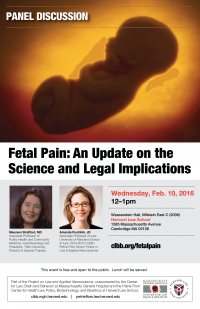By Amanda Pustilnik | Alabama Law Review | 2015
Abstract:
What would the law do differently if it could see into the black box of the mind? One of the most valuable things it might do is reform the ways it deals with pain. Pain is ubiquitous in law, from tort to torture, from ERISA to expert evidence. Yet legal doctrines grapple with pain poorly, embodying concepts that are generations out of date and that cast suspicion on pain sufferers as having a problem that is “all in their heads.”
Now, brain-imaging technologies are allowing scientists to see the brain in pain—and to reconceive of many types of pain as neurodegenerative diseases. Brain imaging proves that the problem is in sufferers’ heads: Long-term pain shrinks the brain and changes the way it functions.
This new science has immediate practical and theoretical applications for the law. This Article first proposes reforms to disability law doctrines and their judicial interpretation. It then proposes ways in which pain neuroimaging ought to be handled as a matter of expert evidence in state, federal, and administrative proceedings. Drawing on work in evidence theory, it considers black letter evidence law as well as normative practices that shape how decision makers weigh evidence and credibility. It also offers limits on the use of brain images.
In opening a window into how the brain generates subjective experiences, neuroimaging should lead to doctrinal and practice-based revisions that increase law’s accuracy and fairness. So doing, brain imaging should change the law’s mind about the nature of pain and may require the law to rethink its dualism between body and mind.
Continue reading the paper here.
 The current opiate epidemic has spurred long-overdue scrutiny on the pharmaceutical production and distribution of opiate medication, but it also raises questions of public policy and law regarding the regulation of medical access to and use of opiate medications with high potential for addiction. Expert panelists will address the challenges that arise from efforts to balance restrictions on access to opiates to limit addiction while also preserving sufficient access for legitimate medical management of pain.
The current opiate epidemic has spurred long-overdue scrutiny on the pharmaceutical production and distribution of opiate medication, but it also raises questions of public policy and law regarding the regulation of medical access to and use of opiate medications with high potential for addiction. Expert panelists will address the challenges that arise from efforts to balance restrictions on access to opiates to limit addiction while also preserving sufficient access for legitimate medical management of pain.



